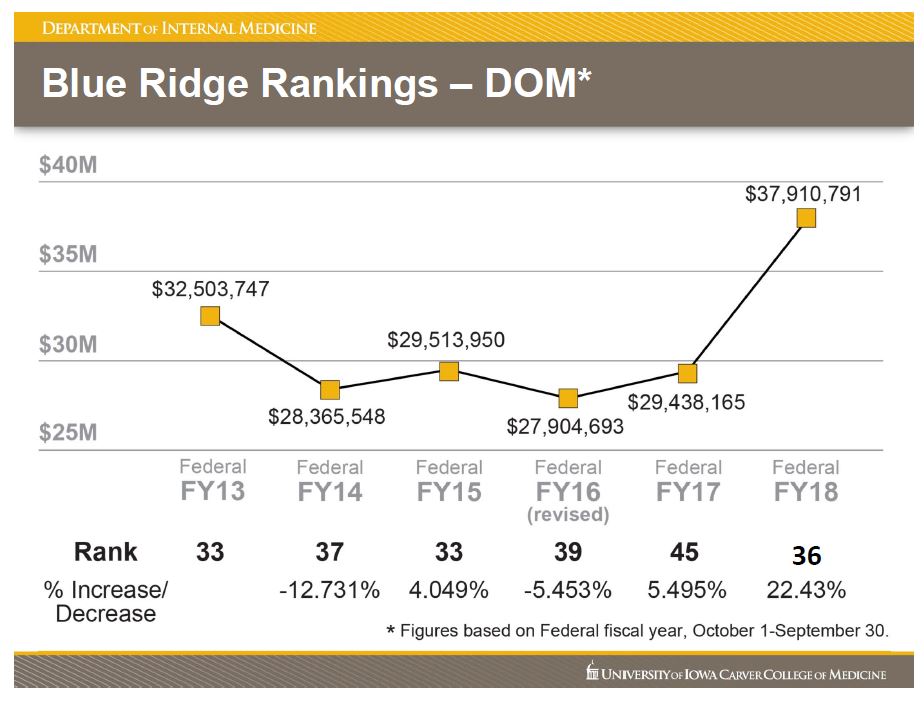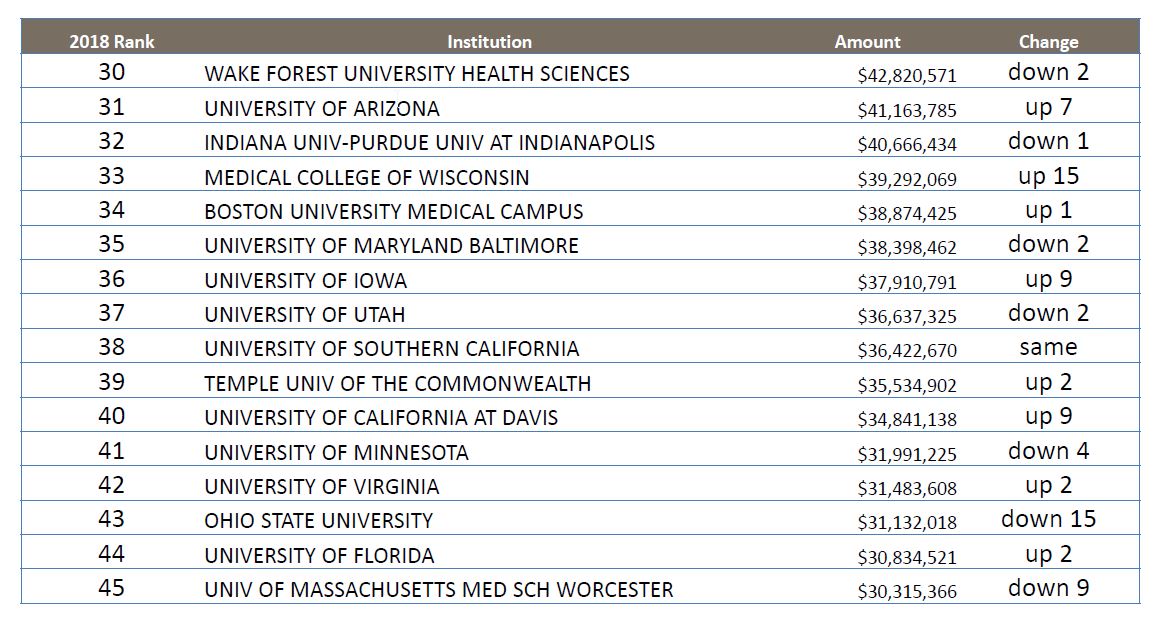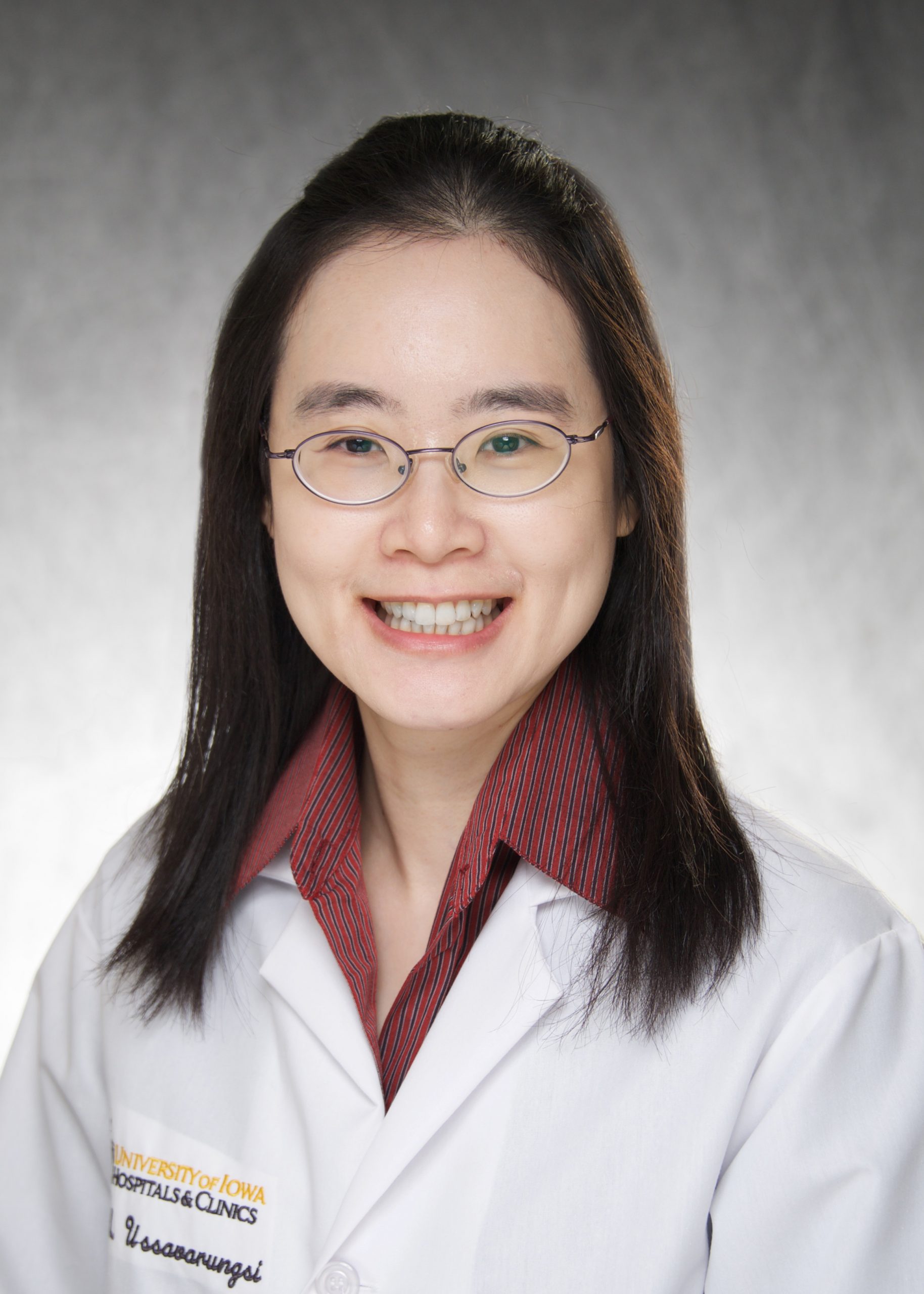Below is a slide that we displayed during last December’s State of the Department address. There is one data point that has been updated since I shared it last. We now know how our fiscal year 2018 $37.9M in federal research dollars ranks us relative to our peers. The 22.43% increase in grants has moved us up nine spots in the Blue Ridge rankings relative to other Departments of Medicine in the nation. This is a strong validation of our department’s strength and contribution to the research mission of our academic medical center. I encourage you to examine the lists at your convenience, but there are a number of important lessons we can draw from the data beyond our jump from 45 to 36.

This increase, both in terms of funding and in our ranking, represents a tremendous amount of heavy lifting from many individual investigators, their lab personnel, and our research administrative team, working together to submit dozens of compelling, successful grant applications. The Department applauds your stellar efforts and you have our gratitude and recognition for your incredible achievements. Our performance gives us leverage and increases our competitiveness, but should not represent the end of our climb. You will note in the next slide below that when we examine our immediate peers, there is tremendous volatility. In fact, although we increased our research funding by ten percent from FY16 to FY17 we actually fell 6 slots in this ranking last year.

So, what will we need to do, not only to maintain our standing but to rise above this churn into the top 30, which is less volatile from year to year? A strategy moving forward cannot be built only on the submission of more individual R01 applications. Although these awards have contributed importantly to our success this year and we need to continue our pace of submissions with increasing resolve, we must embrace additional strategies and opportunities. To substantially increase our departmental NIH funding, it will be important for us to position ourselves and compete for additional NIH funding mechanisms—particularly, consortium grants, clinical research grants, and population science awards, which provide significantly more direct funding per award—than individual R01 grants. I believe that our faculty can be competitive for these awards. The Department will increase its efforts to identify these opportunities and to incentivize collaborative efforts to build competitive research teams. In a college-wide research retreat hosted by Dean Brooks Jackson recently, we identified a number of strengths, opportunities, and key areas where we as an institution should focus our attention and resources. A clear theme from this retreat was the importance of leveraging our strengths, but also building infrastructure that will support multi-disciplinary research. More details about the recommendations arising from this retreat will be forthcoming from the College.
 I recently became aware of an innovative approach at the Veterans Affairs Medical Center that seeks to increase the relevance of our research to the communities that we serve. For our work to have the maximal impact on society, to improve the health of our neighbors, to extend longevity and importantly quality of life, it is essential to connect with people first, to find out what they need, so that our research efforts may yield relevant findings, achieve maximal participation and recruitment, and ultimately be translated in the most relevant way. Community-engaged research, therefore, may help focus our questions, reshape our aims, and engage our communities more deeply in our critical research mission. Our health services research group, CADRE, has been using a Veterans Engagement Panel (VEP) for a couple years, which has proven to be mutually beneficial both for the investigators seeking to increase subject participation in their studies and to the lay panel members. Recently, the Institute for Clinical and Translational Science (ICTS) hosted a presentation about the VEP’s growth and successes. The ICTS will host two more panels on community-engaged research in the coming weeks. For more information about them, go here and here.
I recently became aware of an innovative approach at the Veterans Affairs Medical Center that seeks to increase the relevance of our research to the communities that we serve. For our work to have the maximal impact on society, to improve the health of our neighbors, to extend longevity and importantly quality of life, it is essential to connect with people first, to find out what they need, so that our research efforts may yield relevant findings, achieve maximal participation and recruitment, and ultimately be translated in the most relevant way. Community-engaged research, therefore, may help focus our questions, reshape our aims, and engage our communities more deeply in our critical research mission. Our health services research group, CADRE, has been using a Veterans Engagement Panel (VEP) for a couple years, which has proven to be mutually beneficial both for the investigators seeking to increase subject participation in their studies and to the lay panel members. Recently, the Institute for Clinical and Translational Science (ICTS) hosted a presentation about the VEP’s growth and successes. The ICTS will host two more panels on community-engaged research in the coming weeks. For more information about them, go here and here.
Although we blaze new trails and excel in research, we also lead in educational and training innovation. Our residency training team are innovating in how we train clinicians to train others. For years, Dr. Manish Suneja and Jane Rowat have been leading the construction of and refining a dynamic and iterative program for our residents, the Teaching Skills Curriculum. Yesterday afternoon was the fifth and final session this year of the new Objective Skills Teaching Evaluation (OSTE), a simulated scenario in which residents both practice teaching and evaluate their teaching under peer and faculty observation. There are many layers to the OSTE, but by all measures, the interactive, hands-on practice quickly reveals to the trainee and their teachers where they are succeeding and where they should focus their future efforts. Passing on what we know to the next generation is fundamental to our mission as an academic department, and I am pleased that our Education Team continues to find new solutions to ensuring that every physician leaves our program as an expert teacher.

